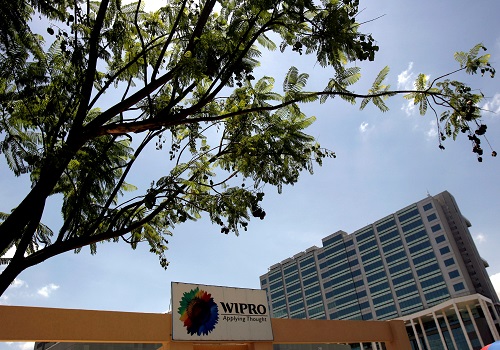Silver trading range for the day is 71355-73345 - Kedia Advisory

Follow us Now on Telegram ! Get daily 10 - 12 important updates on Business, Finance and Investment. Join our Telegram Channel
Gold
Gold exhibited a modest uptick yesterday, closing at 62179 with a gain of 0.14%, as traders reconsidered their expectations for interest rate cuts by the Federal Reserve. This reevaluation followed a report indicating that consumers anticipate lower inflation in the current year. The Federal Reserve's ambiguous stance, as reflected in the latest minutes and stronger-than-expected job numbers, tempered expectations for an imminent policy easing in the U.S. Key U.S. economic data to watch this week includes the December consumer price index (CPI) and the December producer price index (PPI) reports. China continued its consistent increase in gold reserves for the 14th consecutive month in December, reinforcing its commitment to diversifying holdings. The country held 71.87 million troy ounces of gold at the end of December, up from 71.58 million ounces in November. The value of China's gold reserves also increased to $148.23 billion, reflecting confidence in gold as a strategic asset. From a technical standpoint, gold is currently experiencing short-covering, marked by a notable -6.96% drop in open interest, settling at 10254. This shift is accompanied by an upward movement in prices, rising by 84 rupees. The support level is identified at 62030, with a potential test of 61885 levels if this support is breached. On the upside, resistance is expected at 62405, and a breakthrough could lead to further testing of 62635. Traders should closely monitor these technical levels alongside evolving economic indicators to make informed decisions in this dynamic gold market.
Trading Ideas:
* Gold trading range for the day is 61885-62635.
* Gold prices rose as traders reassessed interest rate cut expectations from Fed
* Consumers expect lower inflation this year, dampening expectations for an early policy easing in the U.S.
* China increased its gold reserves for a 14th consecutive month in December
Silver
Silver faced a decline of -0.52% yesterday, settling at 72047, as the dollar index strengthened to 102.4, hovering near mid-December levels. Traders are eagerly anticipating the upcoming release of the U.S. Consumer Price Index (CPI) on Thursday for insights into the Federal Reserve's future plans. The likelihood of a rate cut in March currently stands at 64%, significantly lower than the nearly 90% probability observed just a week ago. The New York Fed survey depicted consumers' expectations for decreased inflation, slower gains in household earnings, and subdued spending over the coming years. The survey results indicated that inflation expectations for the next year are at 3%, the lowest since January 2021, while inflation three years from now is anticipated to be 2.6%. Atlanta Fed President Raphael Bostic remarked on the unexpected decline in inflation, emphasizing the need to give the current tight policy time to address inflation concerns. Bostic envisions two 25 basis points cuts by the end of 2024. From a technical standpoint, the silver market is currently undergoing fresh selling pressure, marked by a 6.9% increase in open interest, settling at 24017. Despite a price decline of -380 rupees, the support level is identified at 71700, with a potential test of 71355 levels if this support is breached. On the upside, resistance is expected at 72695, and a breakthrough could lead to further testing of 73345. Traders should closely monitor these technical levels alongside evolving economic indicators to make informed decisions in the dynamic silver market.
Trading Ideas:
* Silver trading range for the day is 71355-73345.
* Silver dropped as dollar edged higher to 102.4, as traders await the key US CPI
* Atlanta Fed President expects two 25 bps cuts by year-end 2024
* Fed Governor believes current policy stance is sufficiently restrictive
Crude Oil
Crude oil prices surged by 2.92%, settling at 6034, fueled by escalating geopolitical tensions in the Middle East and recent supply outages in Libya. The market found support as Saudi Arabia announced a reduction in the February official selling price (OSP) of its primary Arab Light crude for Asia, marking the lowest in 27 months at $1.50 a barrel above the benchmark. The Middle East geopolitical landscape intensified as rumours circulated about shipping freight companies paying fees to Houthi rebels for safe passage in the Red Sea region. However, these rumors were swiftly dismissed by several shipping companies. U.S. Secretary of State Anthony Blinken's visit to Tel Aviv to discuss the situation with Israel's Prime Minister Benjamin Netanyahu and outline an international task force to monitor the Red Sea passage added to the market's unease. Additionally, oil prices reacted to reports indicating that Russian oil exports aligned with the production cuts agreed upon in the latest OPEC+ meeting. The U.S. Energy Information Administration (EIA) reported a slight decline in U.S. crude oil output in October to 13.248 million barrels per day, marking the first monthly decrease since April. The EIA revised its September oil output estimates to 13.252 million bpd. Technically, the crude oil market witnessed short-covering, with a notable 29.82% drop in open interest, settling at 12212. Crude oil finds support at 5912, and a breach below may lead to a test of 5790. On the upside, resistance is likely at 6113, and a move above could pave the way for testing 6192.
Trading Ideas:
* Crudeoil trading range for the day is 5790-6192.
* Crude oil prices rise due to geopolitical tensions and supply outages in Libya.
* Saudi Arabia reduces the February official selling price of its primary Arab Light crude for Asia to the lowest in 27 months.
* US crude oil output declines in October, the first monthly decline since April.
Natural Gas
Natural gas prices surged significantly by 14.74%, settling at 271.6, driven by a combination of lower output and forecasts predicting extremely cold weather in the coming week. This rally is supported by expectations of a record-high daily demand, with meteorologists anticipating a shift to colder temperatures from January 13-23. Despite entering the coldest phase of winter, traders are mindful of the fact that winter futures had already peaked at $3.608 per mmBtu on November 1. This earlier peak was attributed to record production levels and an abundance of gas supplies. The average gas output in the Lower 48 U.S. states has declined to 107.7 billion cubic feet per day so far in January, down from the monthly record of 108.5 bcfd in December. Meteorologists foresee a shift towards colder-than-normal temperatures from January 13-23, contributing to the heightened demand for natural gas. LSEG forecasts U.S. gas demand, including exports, to rise from 137.2 bcfd this week to 158.4 bcfd next week as heating needs intensify. On a daily basis, total U.S. gas demand, including exports, is expected to reach 169.2 bcfd on Martin Luther King Day on January 15, even with several businesses and government offices closed for the long U.S. holiday weekend. Technically, the natural gas market is witnessing fresh buying momentum, evidenced by a substantial 55.16% increase in open interest, settling at 28152. Natural gas finds support at 246, and a breach below may lead to a test of 220.3. On the upside, resistance is anticipated at 285.6, with a potential breakthrough paving the way for testing 299.5.
Trading Ideas:
* Naturalgas trading range for the day is 220.3-299.5.
* Natural gas rose due to lower output and forecasts of extremely cold weather.
* Extreme cold may hamper production due to freezing equipment.
* Average gas output fell to 107.7 bcfd so far in January, down from a monthly record of 108.5 bcfd in December.
Copper
Copper prices experienced a decline of -0.9%, settling at 713.9, driven by a significant discount in the cash copper contract to the benchmark three-month contract on the LME. The cash contract's discount hit $108 per metric ton, the largest since September 1992, while the discount over the February contract stood at $58 per ton. This trend prompted Asian buyers to negotiate lower prices with copper sellers, especially for applications in the power and construction industries. LME-approved warehouse stocks of copper have surged by nearly 200% since July last year, reaching 161,725 metric tons. Despite disruptions at mines such as First Quantum's Cobre mine in Panama and production cuts by Anglo American and Vale, the copper market faces downward pressure. In China, market participants are closely watching upcoming crucial credit lending and trade data to assess the demand prospects in the world's largest metals consumer. Meanwhile, key data releases in the U.S., including the December consumer price index and producer price index reports, will provide insights into the inflationary environment. Cooling U.S. inflation has allowed the Federal Reserve to adopt a more accommodative monetary policy. Chile reported a decline in copper exports to $4.16 billion in December, marking an 8.14% decrease compared to the previous year, according to the central bank. Technically, the market observed fresh selling with a notable 11.19% increase in open interest, settling at 6389. Copper finds support at 710.2, and a breach could test 706.5, while resistance is anticipated at 720.7, with a potential breakthrough leading to testing 727.5.
Trading Ideas:
* Copper trading range for the day is 706.5-727.5.
* Copper dropped as LME copper cash to three month discount hits highest since 1992.
* LME stocks were at 161,725 metric tons are up nearly 200% since July last year.
* Chile, saw exports of copper reach $4.16 billion in December, down 8.14% from a year earlier.
Zinc
Zinc prices experienced a marginal decline of -0.02%, settling at 223.45. In December 2023, China's refined zinc production rose to 590,900 tons, up 2.05% from the previous month and 12.38% year-on-year, surpassing earlier estimates. This surge in production, particularly in China, contributed to the market's overall supply dynamic. The U.S. non-manufacturing purchasing managers' index (PMI) for December and the service industry employment sub-indicator both recorded declines, restraining the ascent of the U.S. dollar. Consumer inflation expectations for 2024 in the U.S., as indicated by the New York Fed's December survey, decreased to 3.01%, the lowest in three years, suggesting a moderation in inflation expectations. Despite the drop in inflation expectations, Federal Reserve officials emphasized that the risk of rising inflation persists, signaling that it's not yet the right time for interest rate cuts. Expectations for a Federal Reserve rate cut in the third quarter were dampened, influencing market sentiment. Domestic refined zinc production in China is anticipated to decrease to 572,400 metric tons in January 2024 from December's 590,900 metric tons. On the global scale, the zinc market deficit narrowed to 52,500 metric tons in October from 62,000 tons in September, according to data from the International Lead and Zinc Study Group (ILZSG). Technically, the market observed long liquidation, with a -6.65% drop in open interest settling at 2539. Zinc finds support at 222.5, and a breach could test 221.4, while resistance is anticipated at 224.9, with a potential breakthrough leading to testing 226.2.
Trading Ideas:
* Zinc trading range for the day is 221.4-226.2.
* Zinc dropped as China's refined zinc production increased by 2.05% in December.
* Domestic refined zinc production is expected to drop in January 2024.
* U.S. non-manufacturing PMI and service industry employment sub-indicator fell in December.
Aluminium
Aluminium prices posted a marginal gain of 0.05%, settling at 203.65, driven by expectations of ample supplies of key input materials. The market had experienced a surge in late-year prices following an explosion in a fuel depot in Guinea, the world's third-largest exporter of bauxite, a crucial component in aluminium production. However, concerns over a supply crisis eased as reports indicated strong investments from the UAE in Guinean bauxite infrastructure. The demand for aluminium remained supported by expectations of economic stimulus measures from the Chinese government, aimed at bolstering manufacturing activity. The People's Bank of China (PBoC) extended CNY 350 billion to state banks, including the China Construction Bank, with signals of potential reserve requirement cuts. Despite these factors, discounts for cash against three-month LME contracts remained wide for various industrial metals, signaling sufficient product availability for near-term supply and reflecting concerns about global economic growth. On the supply side, producer Alcoa announced plans to halt production in 2024 at its loss-making alumina refinery in Western Australia, impacting the aluminium production landscape. From a technical standpoint, the market witnessed fresh buying, with a 1.36% increase in open interest, settling at 4243. Aluminium is currently finding support at 202.7, and a potential breach could test the 201.7 levels. Resistance is anticipated at 204.5, and a breakthrough might lead to testing 205.3.
Trading Ideas:
* Aluminium trading range for the day is 201.7-205.3.
* Aluminium settled flat amid expectations of ample supplies.
* Discounts for cash against three-month LME contracts remain wide, indicates ample supply.
* Chinese government stimulus expected to support manufacturing, boosting demand for goods.
Cotton
Cotton prices, represented by Cottoncandy, edged up by 0.22% to settle at 55700, supported by low-level buying. The Cotton Association of India (CAI) maintained its pressing estimate for the 2023-24 season at 294.10 lakh bales, contributing to market sentiment. CAI President Atul S Ganatra noted that total supply till the end of November was estimated at 92.05 lakh bales. This includes market arrivals of 60.15 lakh bales, imports of 3 lakh bales, and opening stocks of 28.90 lakh bales. The steady estimate from CAI provided some stability to the market. Brazil's historic high cotton production in the 2022-23 season, driven by increased cultivation and productivity, led to a rise in global supply. However, sluggish demand amid unfavorable economic conditions resulted in bloated inventories and reduced cotton prices worldwide. Reports of a decline in pink bollworm infestation in the cotton crop were noted. The infestation reduced from 30.62% during 2017-18 to 10.80% in 2022-23, impacting cotton production in various zones across the country. Global cotton dynamics also played a role, with Brazilian cotton shipments increasing in November. However, the International Cotton Advisory Committee (ICAC) projected that global cotton production would surpass consumption for the second consecutive year. The 2023/24 U.S. cotton balance sheet reflected slightly lower consumption but higher production and ending stocks, influencing the global balance sheet. In the major spot market of Rajkot, Cottoncandy prices ended at 26438.85 Rupees, marking a decline of -0.25%. On the technical front, the market is under short-covering pressure, with a -0.99% drop in open interest, settling at 200. Cottoncandy is finding support at 55480, with a potential test of 55270. Resistance is anticipated at 55980, and a breakthrough could lead to testing 56270.
Trading Ideas:
* Cottoncandy trading range for the day is 55270-56270.
* Cotton gains as CAI maintained its estimate for the 2023-24 season at 294.10 lakh bales.
* Global cotton production expected to outpace consumption for second year in a row.
* Pink bollworm infestation in cotton crop has declined.
* In Rajkot, a major spot market, the price ended at 26438.85 Rupees dropped by -0.25 percent.
Turmeric
Turmeric prices surged by 2.79%, closing at 13342, primarily driven by concerns of potential yield losses due to unfavorable weather conditions. The adverse weather has raised apprehensions about crop conditions, supporting the bullish trend. Additionally, the market witnessed support from improved export opportunities. However, the upside in Turmeric prices is expected to be limited as buying activities have been slow, anticipating the release of stocks ahead of the commencement of new crops in January 2024. Pressure on prices is also evident due to favorable weather conditions improving the crop condition. The location decision for PM Modi's Turmeric Board in Telangana has sparked concerns among farmers in Maharashtra. Crop conditions are reported to be satisfactory, with harvest readiness expected during January to March. The current level of buying activity and decreasing supplies are anticipated to sustain price stability. Turmeric exports during April to October 2023 witnessed a modest rise of 2.63%, totaling 1,02,162.94 tonnes compared to 99,585.88 tonnes in the same period of the previous year. Monthly data for October 2023 shows a gain of 11.58% compared to September 2023 but a decline of 9.30% compared to October 2022. In the major spot market of Nizamabad, Turmeric prices ended at 12945.25 Rupees, marking a decline of -0.88%. On the technical front, the market is under short-covering pressure, with a -3.72% drop in open interest, settling at 11,780. Turmeric is currently finding support at 12972, with a potential test of 12602. Resistance is anticipated at 13580, and a breakthrough could lead to testing 13818.
Trading Ideas:
* Turmeric trading range for the day is 12602-13818.
* Turmeric rose due to potential yield losses caused by unfavorable weather conditions.
* Support is evident for improved export opportunities.
* Buying activities have been slower in anticipation ahead of new crops in January 2024.
* In Nizamabad, a major spot market, the price ended at 12945.25 Rupees dropped by -0.88 percent.
Jeera
Jeera prices saw a decline of -1.43%, settling at 26815, primarily due to higher production expectations in key growing regions such as Gujarat and Rajasthan. The aggressive sowing for Jeera in Gujarat and a sluggish export scenario are contributing to the pressure on prices in the near term. Sowing activities for Jeera have progressed smoothly, thanks to favorable weather conditions. In Gujarat, Jeera sowing witnessed a remarkable growth of nearly 102%, reaching 544,099 hectares compared to 268,775 hectares in the same period in 2022. Similarly, there was a 13% increase in cumin area in Rajasthan. Despite the increased sowing, the global demand for Indian Jeera has declined, as buyers have favored other origins like Syria and Turkey due to the comparatively higher prices of Indian Jeera. Exports have been subdued, with a 34.02% drop in Jeera exports during April to October 2023, totaling 76,367.90 tonnes compared to the same period in 2022. In October 2023, Jeera exports further decreased by 13.39% compared to September 2023 and a significant drop of 46.77% compared to October 2022. In the major spot market of Unjha, Jeera prices ended at 31914.5 Rupees, marking a decline of -0.56%. On the technical side, the market is under fresh selling pressure, with a 2.13% increase in open interest, settling at 1869. Jeera is currently finding support at 26490, with a potential test of 26150. Resistance is anticipated at 27280, and a breakthrough could lead to testing 27730.
Trading Ideas:
* Jeera trading range for the day is 26150-27730.
* Jeera prices dropped due to higher production prospects
* In Gujarat, Cumin sowing witnessed very strong growth by nearly 103% with 530,030.00 hectares against sown area of 2022
* Stockists are showing interest in buying on recent downfall in prices triggering short covering.
* In Unjha, a major spot market, the price ended at 31914.5 Rupees dropped by -0.56 percent.
Views express by all participants are for information & academic purpose only. Kindly read disclaimer before referring below views. Click Here For Disclaimer












 320-x-100_uti_gold.jpg" alt="Advertisement">
320-x-100_uti_gold.jpg" alt="Advertisement">








